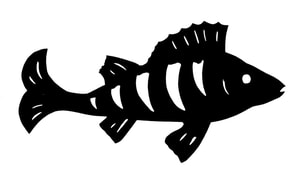 A paper perch A paper perch Komm, Jesu, komm is possibly Bach’s most tender and passionate motet. It is another funeral motet, but we don’t know for whom, though it may have been written for the funeral of the theologian Johann Schmid who died in 1731. We do know that the motet was written sometime before 1732 in Leipzig. There is no autograph of this motet, and the only reason we have it at all is because Christoph Nichelmann, a student of Bach’s and accomplished composer in his own right, copied it in 1732. The poet of the text, Paul Thymich, a professor at the Thomasschule where Bach was cantor, wrote the poem for another funeral, that of the philosopher Jakob Thomasius in 1684. On that occasion Johann Schelle, Bach’s predecessor as cantor, composed the music to this text. Schelle’s work is fairly simple for one choir in five voices, but uses the whole text. Bach’s version uses only the first and last stanzas and spins those out mainly in double choir format through several sections and variations. The longest section accompanies the words “du bist der rechte Weg, die Wahrheit, und das Leben,” or “you are the way, the truth, and the life,” and is an extended back and forth between choir one and choir two. You can hear Schelle’s version here and follow along with the score. 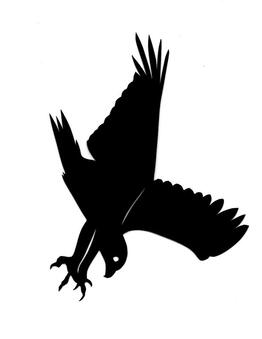 A diving osprey A diving osprey This is also one of Bach’s more “modern” sounding works. It looks forward to the gallant style in its dance-like singability with focus on underscoring the meaning of the text above all musical tricks. Instead of ending with a chorale it ends with an “aria” which highlights this singability. Initially this aria always sounded very chorale-like to me because of the way each phrase ends with a fermata, but when you analyze it a little more it becomes apparent how different it is. Chorales usually only have one note per syllable moving mainly in a step wise fashion, while this aria has leaps and scales, several notes to a syllable in places. It’s slightly more florid than a chorale, more passionate. It is truly an aria for choir. Performing such a modern sounding motet at a German funeral was something of a rarity and leads musicologist Martin Geck to wonder if it was composed specifically for someone who was known to be a fan of more forward looking music. You can read an extended discussion of this motet here. Here is the text in German and translated into English as used by Bach:
This is one of several motets by Bach for double choir, but due to the back and forth nature of the choirs in the “du bist der rechte Weg” part I’ve decided to divide the puppet screen to show how the two choirs are separate but come together at the end. 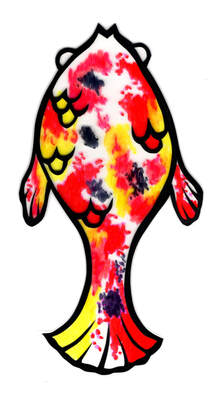 One of the guru fish One of the guru fish We follow two goldfish as they flop around on the bathroom floor, fall into the drain, struggle through the house pipes, then the main water line, and through the sewers. The sewers follow “der saure Weg,” or “the bitter way,” and the fish meet several strange and creepy creatures there, including a cockamouse and the Loveland Frogman. The goldfish splash out of the sewer and end up in the river (the Elbe on one side and the Rhine on the other, two German rivers that lead to the sea) where they are met by two colorful koi who I call guru fish. The gurus set them off on the right path to follow the river and get out of the way of the bubbling sewage. As the choir trades off singing “du bist der rechte Weg,” or “you are the right way,” various river creatures make an appearance to accompany the goldfish on part of their journey. These creatures vary from mammals to birds, to other fish. In fact this motet contains more puppets than the other two due to the split screen aspect, but they mostly make brief appearances. This part of the motet is extremely lulling and meditative. In fact I found it kind of boring before, but after practicing the timing of the scroll over and over I discovered what this music really is. It’s a meditation, and what better way to enjoy a meditative trance than to follow the river? Eventually both the Elbe and the Rhine empty out into the same place: the North Sea. As the aria begins the split in the screen disappears. The choir comes together as one, and the rivers become one sea. The guru koi come back to lead the goldfish into the sunset. I love that Komm, Jesu, komm is the one motet that is so very much about pathways, making it fairly emblematic of the entire motet puppet project as a whole. I invite you to imagine these guru fish as any spiritual or philosophical leaders who appeal to you be they Jesus, Buddha, a wise teacher, a spirit guide, or even Karl Marx.
0 Comments
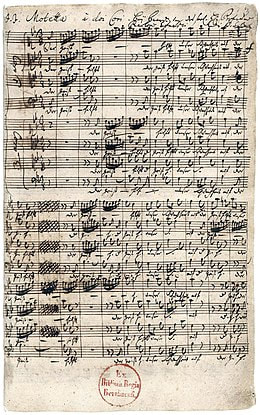 J.S. Bach's manuscript for Der Geist hilft J.S. Bach's manuscript for Der Geist hilft Der Geist hilft unser Schwachheit auf is the only motet for which we have not only the autograph but also almost all of the performance parts, and we know (almost) exactly when it was performed and why. Der Geist hilft was written for the funeral of Johann Heinrich Ernesti who was the rector (or headmaster) of the Thomasschule where Bach was the choirmaster. Ernesti was also the professor of poetry at Leipzig University, and in the early 18th century that primarily meant studying ancient Roman poets. He gained fame for his writings about Cicero (ironically not a poet.) Ernesti did write poetry himself, but primarily in the form of Curriculum Vitaes for his students, apparently a strange but common practice at the time. A couple years after his death CVs would be required to be written in prose form as Leipzig University had had enough of this overly witty poetic frippery. As rector of Thomasschule Ernesti was a bit negligent, which might be why Bach liked him. We know that Ernesti died on October 16, 1729, but there’s a little bit more confusion as to when his funeral was held. It was somewhere between October 20 and October 24, and while his death was by no means unexpected it did happen suddenly, leaving Bach between 4 and 8 days to compose Der Geist hilft. At least the text was already chosen for him as Ernesti had specified he wanted the text for his funeral service to come from Romans 8:26-27. Here’s the full text of the motet in German and English:
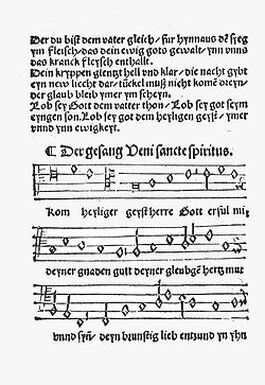 Komm, heiliger Geist Komm, heiliger Geist The words for the chorale come from the third verse of Martin Luther’s hymn, Komm, heiliger Geist, Herre Gott (the melody of this chorale is quite old, possibly related to a piece by Marchetto di Padua from the early 14th century.) The textual choice of this chorale was likely Bach's alone. He also used this chorale in his cantatas: Wer mich liebet, der wird mein Wort halten, BWV 59; and Er rufet seinen Schafen mit Namen, BWV 175. There is some speculation that while the chorale was definitely performed at the funeral, it may not have been intended as part of the motet since orchestral parts are not written for it, only choral parts. It’s possible that the chorale was sung a cappella at the graveside rather than at the end of the motet, but then again it’s also possible that the instrumental parts have been lost. Because Bach had such a short time to compose this motet it’s thought that he likely pilfered bits and pieces from pre-existing works. I mean, Bach was a genius who was also great at recycling his own work, so this isn’t wholly remarkable, but I can’t help but marvel as a singer how the chorus learned this piece that quickly! I think though that this partially explains why Bach used instrumentation in this motet, the only one for which instruments are explicitly called for (strings double choir one and reeds double choir two, and there is of course the requisite continuo part.) There are other reasons for using instruments too, mainly that this was a special solemn occasion that called for some extra musical oomph. It is also likely that Bach’s Thomasschule choir was joined by choral forces from Leipzig University since the funeral was held at the university church, the Paulinerkirche. The use of at least some instrumentation in motets may also have been German tradition, usually it was just organ or continuo, but since this is the only motet of Bach’s that has instrumental parts written out we don’t really know what kind of instrumentation, if any, was used for the others. 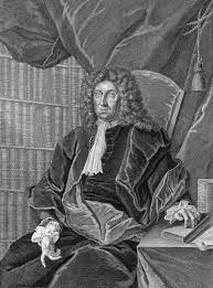 Johann Heinrich Ernesti March 12, 1652 - October 16, 1729 Johann Heinrich Ernesti March 12, 1652 - October 16, 1729 The conjecture around Bach’s reuse of pieces in the composition of Der Geist hilft is really interesting. There is a separate six bar composition on the back of the motet manuscript without words, which seems “cantata like” and has led musicologist Alfred Dürr to think it may have come from a lost cantata. It’s also possible that Der Geist hilft is a reworking of a cantata that Bach was already in the middle of composing (or even rehearsing), but when Ernesti died the focus switched. This would mean that the cantata used as a model for this motet never actually existed in a finished form. There’s also the thought that the opening section with the sopranos in each choir trading off motifs comes from a lost duet, but that is also pure conjecture. Bach was also clearly working with the text from memory because he forgot the word “selbst” and had to add it in later, which messed up his musical lines a little bit. You can read much more about all this here, but it’s really long, so search for “Dürr” to find the more salient bits. As I like to say, the first performance of a piece is usually not the best performance, so I imagine that this funeral performance was probably pretty rough. I’d also like to give a shout out to Anna Magdalena and Carl Philip Emmanuel Bach for all their hard work copying the parts, you guys rock! Personally, this is one of my favorite motets. It’s just so jazzy, syncopated, and fun to sing! I guess that’s another argument in favor of Bach parodying himself here because the music really does feel too joyful for a funeral motet. As far as the puppets are concerned Der Geist hilft represents the “path of wood.” You can read more about the overall concept behind the puppet show here. To recap briefly, I designed the puppet show so that each motet represents one path toward enlightenment (or unity with God, Source, All That Is, what have you.) Each path is based off an element, but I’m borrowing elements from various world traditions, so here we have wood as an element. The piece starts off with four squirrels playing in the grass at the base of a giant Douglas-fir tree. They begin climbing together, giving up and going back one by one until there is only one squirrel left. This lone squirrel braves all sorts of obstacles on his ascent including a raccoon, two crows, bugs, an owl, an eagle, and even a swarm of wasps. At one point he fights a couple of songbirds for a cage of suet that some crazy climber hung way up high in the tree. As the chorale begins the squirrel is up so high the clouds pass him, but he carries on, eventually reaching the top as it disappears into the light. I thought this a fitting metaphor for God helping our weakness. Squirrels aren’t the strongest beasts, but they do have their talents. As long as we are each aware of our own strengths, and believe in ourselves, maybe God will help us succeed on the path most suited to our abilities. The set for this motet, a moving scroll (or “crankie”) is definitely the star of the show at almost 25 feet long! That’s long, but shorter than the one I made for Komm, Jesu, komm. I made it to imitate climbing a tree, so I used math to figure out a very gradual forced perspective. The tree goes from filling the screen to collapsing into a single point over the course of 18 scenes, and I took great liberty with the colors and textures of the wood. My dad saw it and thought it gave off a lava lamp kind of effect. Some of the colors are most unwood-like, but it was definitely fun to paint! Why a Douglas-fir? I have a special relationship to these trees, and I visit them in parks whenever I can. I remember lying beneath one in Salmon Bay Park weeping and burning with fever after a breakup only to return to that tree years later to find it weeping too. I once wrote a poem that included a fir tree “clinging with sap and scent” only to find one the next day in Schmitz Preserve Park sparkling in the way I had envisioned. For me Douglas-firs are spiritual protectors and grief eaters. I'll leave you with the poem I’m referring to. It’s at least somewhat related to the concept of God, or spirit, helping our weakness.
You can catch the show, a collaboration between Paper Puppet Opera and Seattle Bach Choir, on Sunday, March 12, 2023 at 7:30 PM at Our Redeemer's Lutheran Church in the Ballard neighborhood of Seattle. Entrance is by donation only, so come early, and bring opera glasses. Oh, and March 12 also happens to be Johann Heinrich Ernesti's birthday!
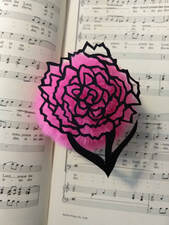 The first puppet I made for this production: a carnation shown on a cat toy on the score of Lobet den Herrn The first puppet I made for this production: a carnation shown on a cat toy on the score of Lobet den Herrn Seems there isn’t much to say about Lobet den Herrn, alle Heiden, or BWV 230, historically. It is “Bach’s” only four part motet, and Bach is in quotes here because its authenticity is in question. Many scholars seem to think it is not by Bach, but perhaps by one of his sons or a student. According to Bach scholar Martin Geck in his book, Johann Sebastian Bach: Life and Work, it was likely written by Wilhelm Friedemann Bach or Johann Gottlieb Goldberg (as in "The Goldberg Variations"). Geck’s main argument is that the work sounds too modern, verging on the gallant style. Others claim it sounds too instrumental compared to the rest of Bach’s vocal works, and indeed it is one of the motets which explicitly calls for instruments that do more than just double the choir. Lobet den Herrn, alle Heiden was only first published in 1821 by Breitkopf und Härtel, and while the publishers claimed to have had access to the autograph score that autograph is long gone. Furthermore, just because it was in Bach’s hand doesn’t mean it was by Bach as he was known to make copies of works he particularly liked or needed to use. Nonetheless, it has been thought to be by Bach for long enough now that it has found its place among the other Bach motets and gets quite a lot of performances. For more historical information you can read this article from the Bach Choir of Bethlehem. 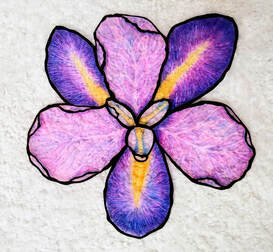 The text of this motet comes from Psalm 117, the only motet “by Bach” that uses only biblical texts, and is rather too celebratory to have been written for a funeral as most of Bach’s other motets were. We don’t actually know what occasion Lobet den Herrn was written for, but here’s the text in both German and English.
I have more to say on my shadow puppet concept for this motet. Lobet den Herrn, alle Heiden depicts “the pathway of light.” For more information on my concept for the puppet motets as a whole you can read my blog post here. The pathway of light does the most, I feel, to portray how united all of earth’s creatures are, and in my mind this is worthy of praise to our creator via the text of this motet.  The human body at the center of the pentagram by Agrippa The human body at the center of the pentagram by Agrippa The show starts with a single circle of light, then one by one rays of light are revealed around that circle. Stars with zodiac symbols in the center appear in those rays of light and remain rather static most of the time, as fixed stars. I used zodiac symbols as shorthand for the constellations they represent rather than to symbolize actual astrology. Personally, I am an astrological agnostic, but I wanted to show how we are all made from “star stuff,” and thus all connected to one another and to the rest of the universe. You will see a mixture that includes 8 six pointed stars and 4 eight pointed stars. Originally I made 12 pentagrams, but when we began rehearsing around Halloween it looked a little too satanic to perform in a church (one of my puppeteers remarked, "That was fun. We went to rehearsal and summoned demons!) However, there is a symbolism to the five pointed star that is relevant here. You can read more about it and its importance as a symbol to Pythagoreans here. The ancient Greeks, saw each point of the five pointed star as representing an element: air, water, fire, earth, and spirit (or some say aether or ideas). Together these elements create humans, so the center of the star, or pentagram, represents humanity. This is a perfect symbol for my motet project as a whole since humanity is placed in the center with Jesu meine Freude and the rest of the motets each represent an element. However, now that I want to do seven motets the symmetry changes and a six pointed star would be more appropriate. My arrangement of elements would be: light, water, wood, earth, stone, and air which together create humans. So in my symbolic world the hexagram at the center of a six pointed star would represent humanity. I'm also including 4 eight pointed stars that are meant to represent compasses since we are on a journey here and need something to keep us on the path. Once the stars move on, black and white flowers appear and dance about the rays of light rather chaotically, getting bigger and smaller. Flowers and plants are light eaters, and we eat plants, so in a way we are also vicarious light eaters. All of life is nourished by light in myriad ways. The dance of the flowers ends with the slow section where a single seedpod appears in the central circle, visited by a lone bee. Petals of red and orange appear around the seedpod as more bees come out. The seedpod gives way to a big purple iris. Leaves appear over the petals, the petals disappear, and colorful butterflies come out. When the Alleluia starts the rays of light disappear and we see a labyrinth of intertwining vines and leaves. The same black and white flowers we saw earlier come back bigger and in color, dancing about for a second before all becoming one big bouquet with the iris at the center. You can catch the show, a collaboration between Paper Puppet Opera and Seattle Bach Choir, on Sunday, March 12, 2023 at 7:30 PM at Our Redeemer's Lutheran Church in the Ballard neighborhood of Seattle. Entrance is by donation only, so come early, and bring opera glasses.
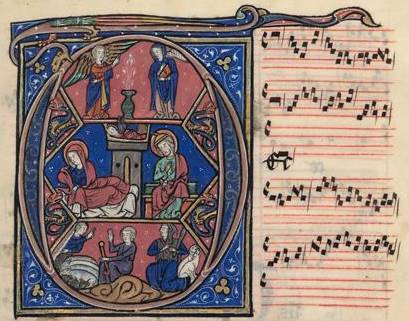 People often ask me when I talk about this project: what the heck is a motet anyway? Well, the definition of a motet has changed over the centuries, so this is not an easy answer. Because of this the renowned Bach scholar Philipp Spitta openly scorns the motet in his three volume biography of the composer saying that it never really refined and defined itself the way other old musical art forms have. Depending on who you ask even the origins of the term “motet” are in dispute. Most scholars today think “motet” comes from the French word for “word” itself, “mot.” In the age of the Notre Dame School, when polyphony was getting carried away in the 13th century, there was a lot of criticism from the church that the words of these crazy new choral settings could no longer be understood because of all these competing musical lines. Some of the clearer lines to the ear were the descant or plainchant parts, the higher harmonies and chants floating over what was often heard as cacophony below. There came a point when French poets put new words to these parts, and originally these were often secular texts. It wasn’t uncommon to even have competing texts written for these parts in several languages at once! The polyphonic parts below were preserved as instrumental parts, so the original motets have more in common with solo songs or madrigals. Here’s a more concise article on the evolution of the motet. 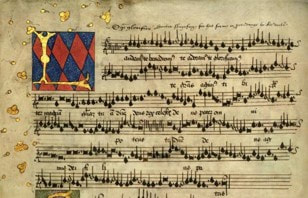 Manuscript from a rarely performed motet by Thomas Tallis Manuscript from a rarely performed motet by Thomas Tallis From here motets began to evolve into very different animals. During the Renaissance they became sacred again, and choral, with or without instrumental accompaniment. They also became grand showpieces that took that Notre Dame School polyphony to the next level. Motets became central sections to masses, so much so that masses were often named after the motet incorporated into them. In German speaking areas the motet texts could be sacred but non-biblical texts, and usually fell into one of two categories: a chorale motet or an aria motet. The chorale motet uses chorale texts and the structure of the motet is often dictated by the chorale in some way. An aria motet is a string of strophic arias sung by one or more soloists. Johann Sebastian Bach’s cousins, Johann Michael (also Sebastian’s father in law) and Johann Christoph Bach, wrote a great many motets which Sebastian studied and frequently performed himself in the course of his church duties. Give some of those a listen, the best of them are incredibly moving and awe inspiring. 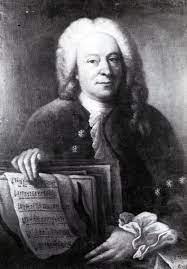 Johann Christoph Bach, see any resemblance? Johann Christoph Bach, see any resemblance? By the time J.S. Bach began writing motets of his own the art form was already considered old fashioned, or at least very traditional and rather conservative, which is why motets were a good choice for funerals and teaching examples. Bach composed motets for both of these purposes, primarily the former, however Singet dem Herrn and Lobet den Herrn were definitely not for funerals as their texts are too celebratory. Singet was likely a teaching motet and there are still a lot of questions around Lobet, more on that later. There are six motets in the current canon of J.S. Bach’s works that are often presented and recorded together:
It’s extremely uncommon for all of these motets to be sung together on one live program, however, Seattle’s Emerald Ensemble did do this for their inaugural concert in 2016, which I had the good fortune to attend, and it is still talked about today for the remarkable feat it was! That being said, Bach never intended for these pieces to go together in this way, and the catalog numbering system only indicates their musical genre in a weird haphazard order unrelated to their dates of composition. There are also additional motets that are either: actually written by Bach, once considered to be written by Bach but actually composed by someone else, or parodies of other Bach pieces put into motet form. These are as follows:
You can read more about all of these here. From this list of extra-canonical motets only Ich lasse dich nicht; O Jesu Christ, mein Lebens Licht; and possibly Sei Lob und Pris mit Ehren are actually by Bach. Now that all that historical background is out of the way I want to talk about my concept for a puppet show around the motets. It’s an idea I’ve been kicking around for a few years now, but without any real solid concept. One day at a Seattle Bach Choir board meeting I mentioned this idea and how I’d love to create a puppet show for them not really thinking they would take me seriously. Seattle Bach Choir had a new director who had just finished his first concert with us at that point, Dr. Daniel Mahraun, and he was actually very interested in this idea! Now I had to flesh out a real concept for this puppet show. We sat down to discuss the idea in February of 2020 with a plan to put it on in 2021, but then the pandemic hit and everything was delayed. The show is finally happening three years later! I hadn’t yet created a puppet show around Christian texts, and this posed an interesting issue because I am not Christian myself. My concept for the motets became a sort of personal spiritual manifesto in shadow puppet form, and I say “sort of” because my focus is on the more universal aspects of my spiritual system. For years I created translations (or more often simply rearranged existing translations) for Seattle Bach Choir’s concert programs, and these motets were frequently in the repertoire. I joked that there are only two themes present in them: praise God, or my life is awful and I can’t wait to die. However, my weird esoteric spiritual background colored my translations. We frequently performed works with Christian texts that had standard English translations, but I would look at them with a different eye and bend them a bit toward the esoteric whenever I could. I’ve never admitted it until now, but there ya go! 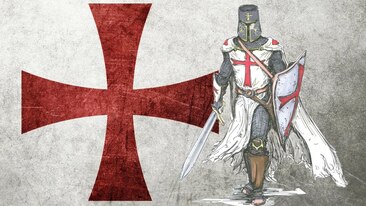 Imagine this guy but with a really long beard Imagine this guy but with a really long beard The overarching concept I came up with for a motet puppet show is about pathways to enlightenment and the spiritual unity of all life. This all goes back to a dream I had when I was between 11 and 13 years old. I dreamed that I was in a prison cell with my brother and we were visited by an ancient medieval knight dressed in white armor with a red cross on his breastplate, long flowing white hair and beard touching the floor. He said only, “there are as many paths to enlightenment as there are rays of light to the sun.” In retrospect this must have been a spirit guide visitation, and apparently a member of the Knights Templar flouting the importance of his beard. It left a lasting mark upon me and I still say his phrase all the time. I think it’s important to recognize everyone’s personal truth. In my own spiritual system reincarnation plays a big role, which means (as I see it) from life to life we have experienced and believed in many different faiths and followed many different religions. Does that mean they’re all false? I would say completely the opposite, what if they’re all true? Could there really be that many different truths, and doesn’t that negate the very concept of truth? Maybe, but what if all these truths lead to the same place? In my system the truth we hold dear right now is exactly the truth we are meant to have at the moment. As long as we are harming none then our belief filters are doing an important job. I don’t think we can control our beliefs very well as humans, not to say that they don’t change sometimes, but they do provide our consciousness with a user interface, and we can’t operate on earth without one. For the puppet show I thought about all the forms in nature that create pathways: rivers, roots, branches, rays of light, gusts of wind, and even the veins of the human body. Because Jesu meine Freude is composed as a musical palindrome I wanted to put it at the center of the motet puppet show. This would make the central fugue, ihr aber seid nicht fleischlich, sondern geistlich (we are not of flesh, but rather of spirit), the central point of the puppet show. In my mind Jesu meine Freude follows the pathways of veins, nerves, and bones in the human body, and this fugue would be a battle within the heart itself. A woodpecker and a beaver from Komm, Jesu, komm The only other rules I had were that Lobet den Herrn should start the show and Singet dem Herrn should end it because both of these motets are songs of praise. Lobet would involve the path of light with stars and flowers, and Singet the path of air filled with breezes and birds. Der Geist hilft represents the path of wood (as seen by a squirrel climbing a tree) while Fürchte dich nicht represents the path of roots with a worm digging through the dirt. Komm, Jesu, komm shows the path of water represented in the journey of goldfish from sewer to ocean. The order I have in mind is: 1. Lobet den Herrn 2. Komm, Jesu, komm 3. Der Geist hilft 4. Jesu meine Freude 5. Fürchte dich nicht 6. Singet dem Herrn For me there’s a thematic echo between Der Geist and Fürchte because of how trees and roots are related, so they’re reflected on either side of the center making a thematic palindrome around a musical palindrome. But in order for this to be a real palindrome with a center I would need an odd number of motets. A few months ago I discovered Ich lasse dich nicht and got very excited! Here is a seventh motet to complete my palindromic idea! It would go just after Jesu meine Freude, but I’m not yet sure what the theme would be, a system of pathways related to water in some way. Lava maybe? Liquid stone? Caves created from water erosion? Glaciers? All of the above? 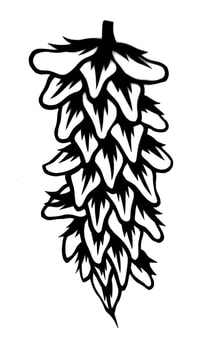 A douglas fir cone from Der Geist hilft unsrer Schwachheit auf A douglas fir cone from Der Geist hilft unsrer Schwachheit auf It’s a big idea, but like I said before it’s very rare that all six motets are performed by one choir in one concert, let alone seven! However, I am hoping to one day gather together two or three chamber choirs to share the load and perform all the motets in order that way. In the meantime you can catch the first three with shadow puppets and live singing by Seattle Bach Choir at Our Redeemer’s Lutheran Church in the Ballard neighborhood of Seattle on March 12, 2023 at 7:30 PM. That Sunday is also the start of daylight saving’s time, so remember to spring ahead. Entrance is by donation only, so get there early to claim a seat, and bring opera glasses if you have some as the puppets are somewhat dainty. Watch this blog for more about these three motets. I’ll be discussing each one individually over the next few weeks. In case you’re interested, here’s a partial discography of Bach motet recordings we puppeteers have been practicing with. We like to stay on our toes, so we’ve been alternating between several recordings.
|
AuthorHi, Juliana Brandon here. This is where I let you peek behind the scenes here at Paper Puppet Opera. See works in progress, rehearsal snippets, and learn more about the history behind each production. Archives
March 2023
Categories |
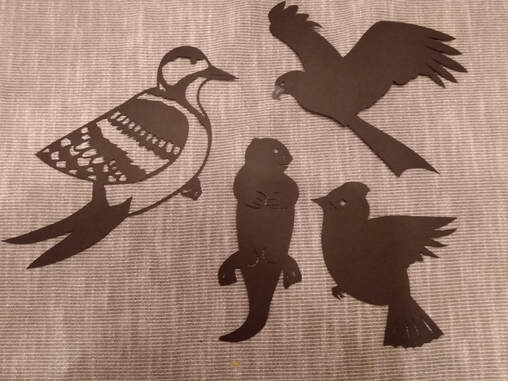

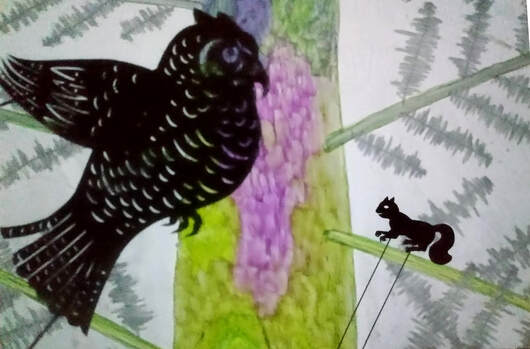
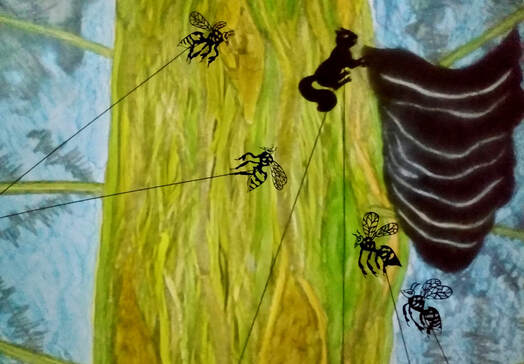
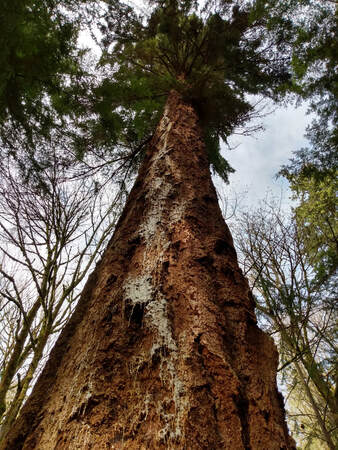
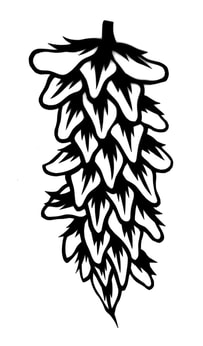
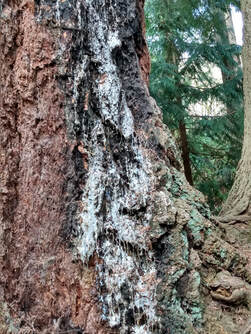
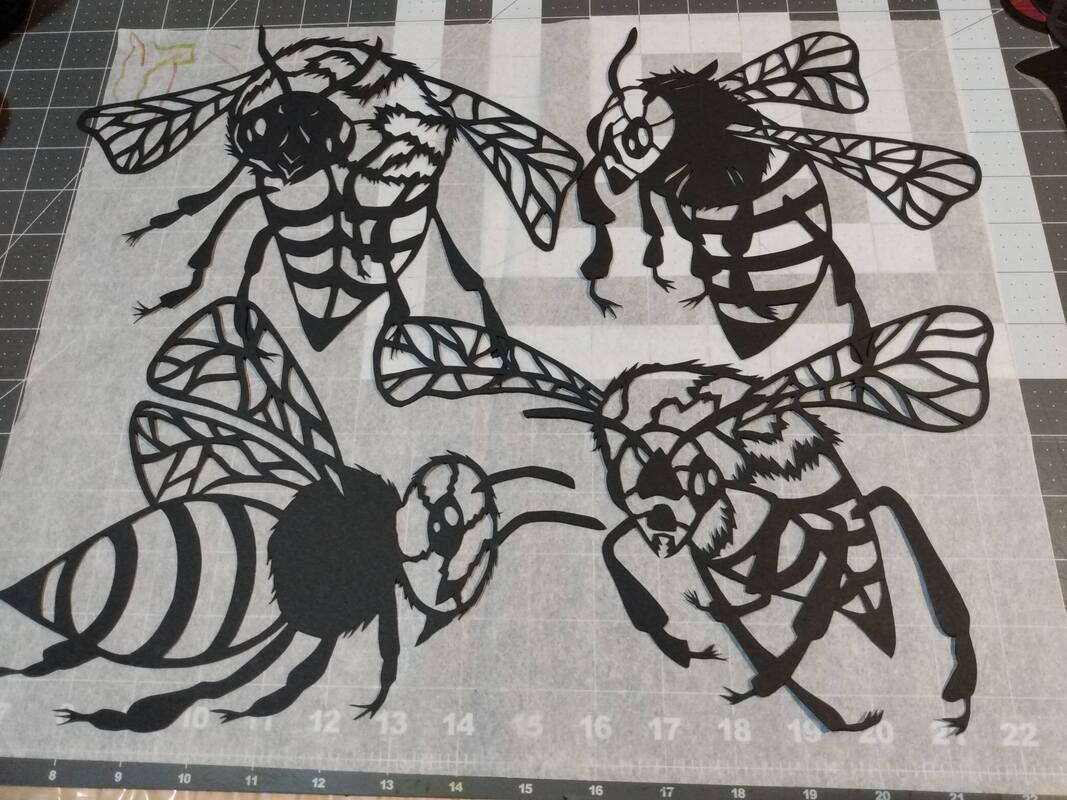
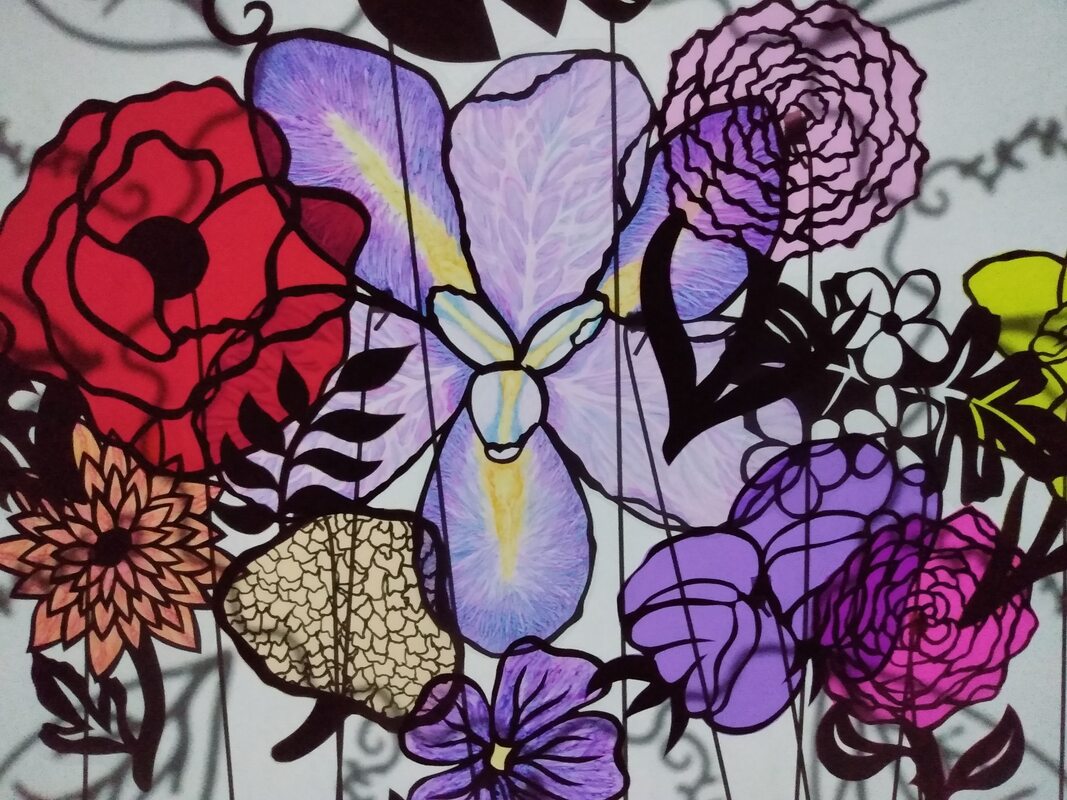
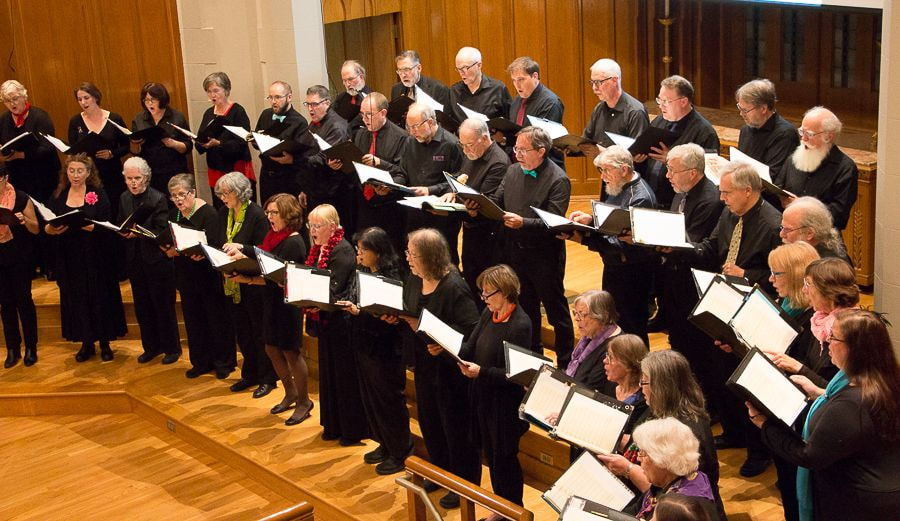
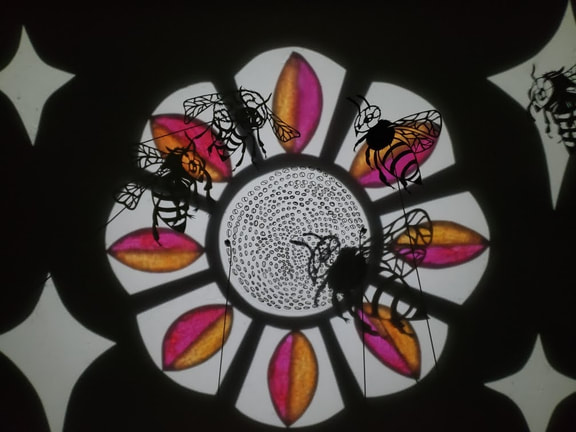
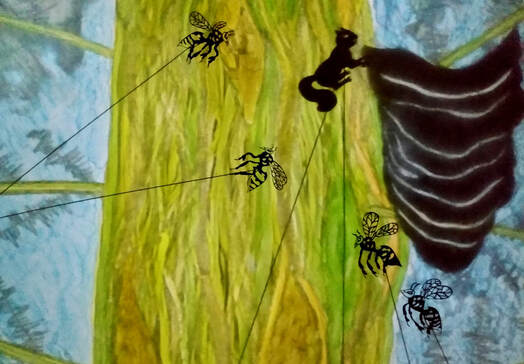
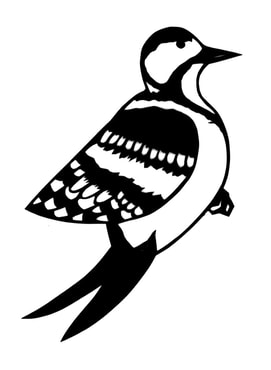

 RSS Feed
RSS Feed